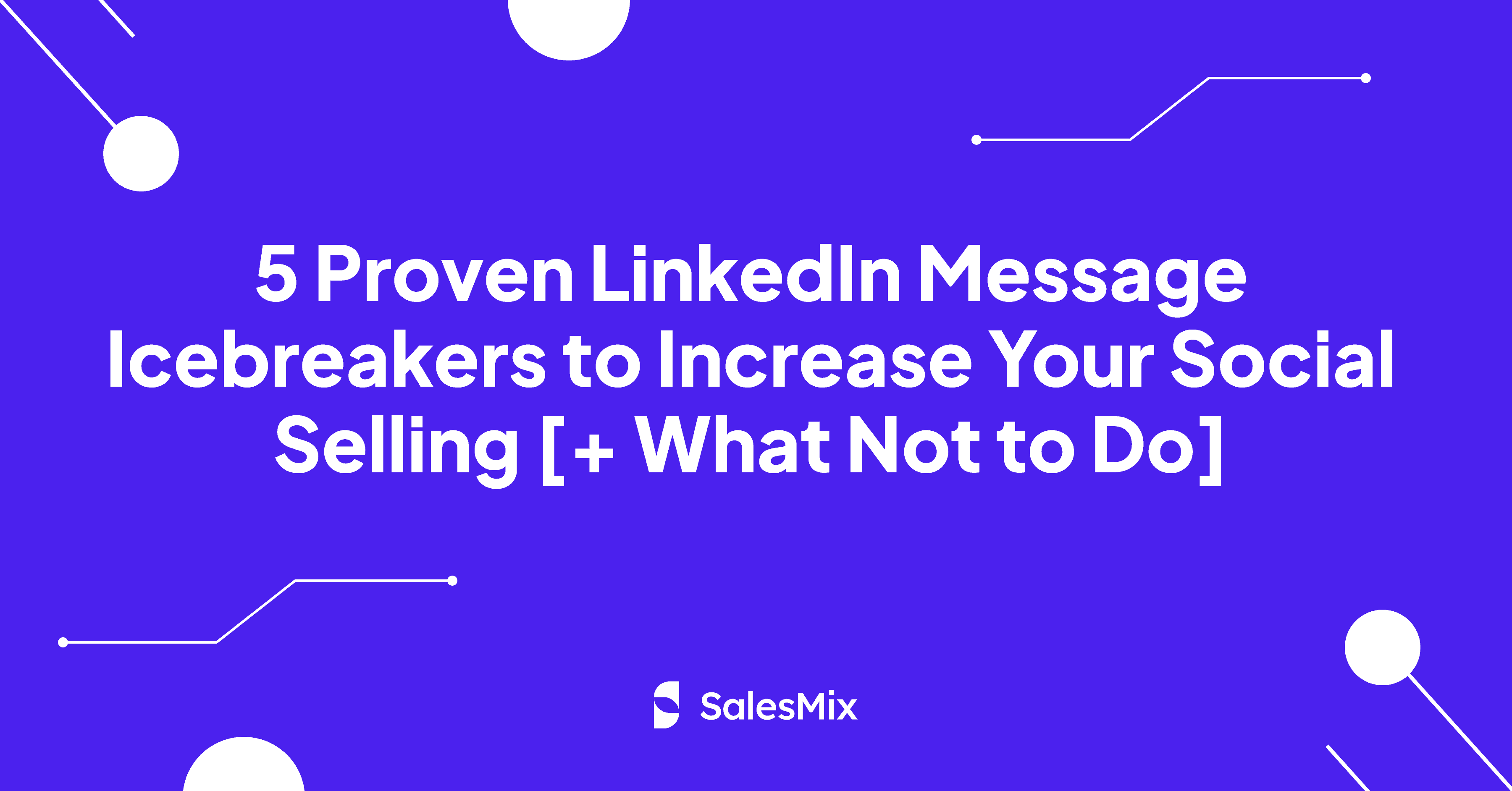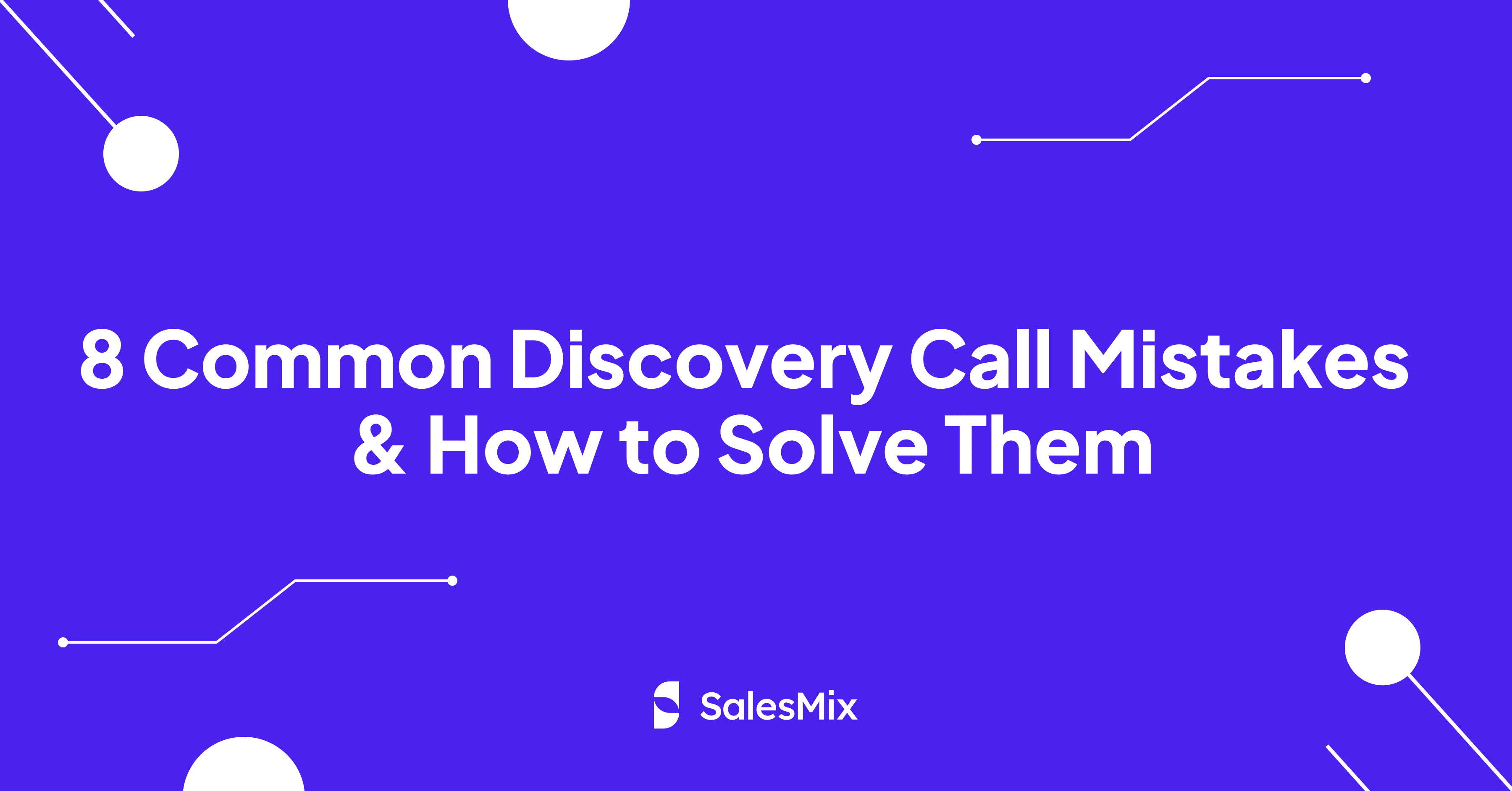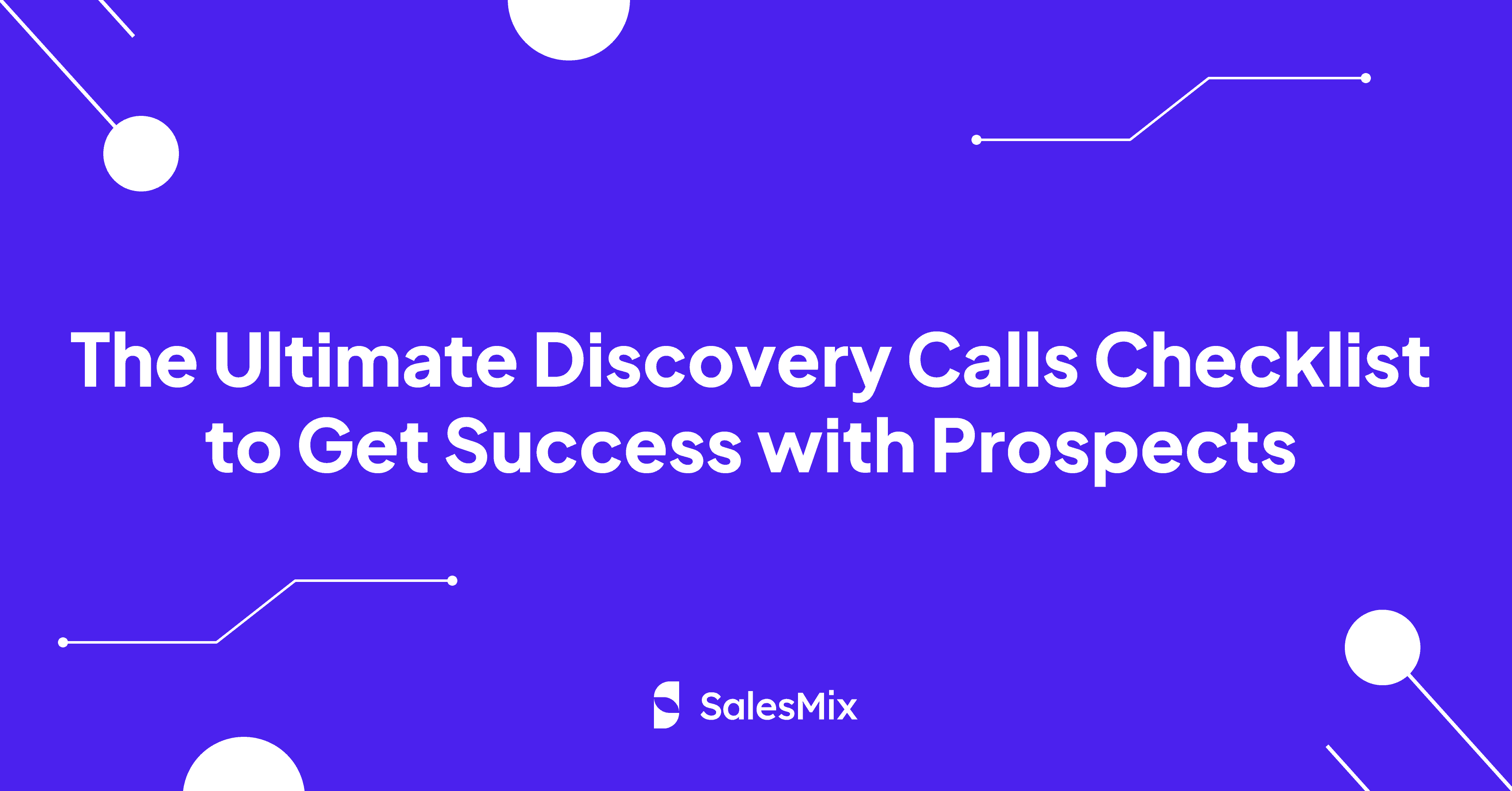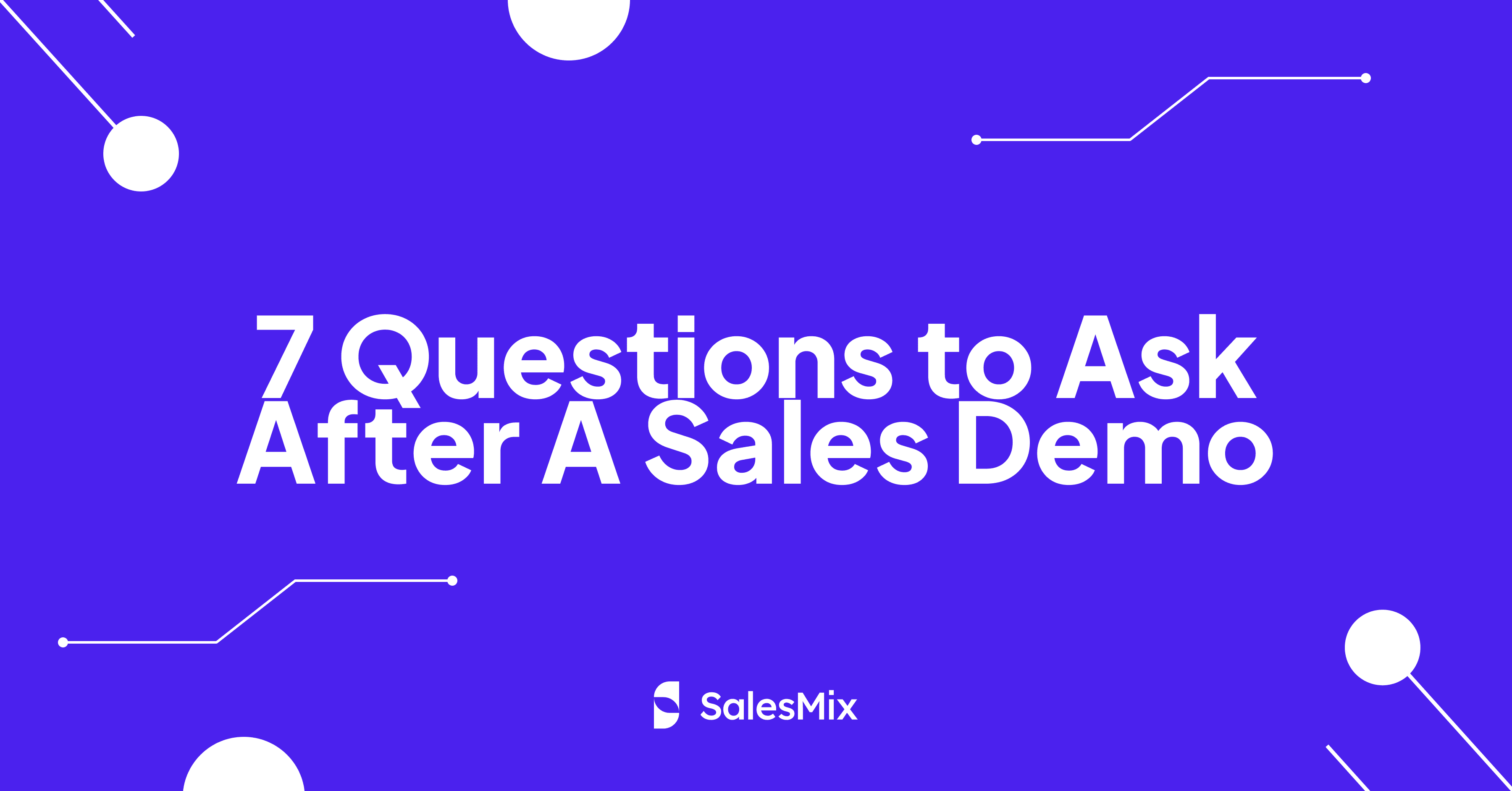Table Of Contents
How often have you sent a LinkedIn message hoping to spark a meaningful business dialogue, only to face the cold wall of no response?
LinkedIn is flooded with outreach efforts, and cutting through this clutter requires a refined approach to initiating conversations. The stakes are high, and the margin for error is slim – your opening message can make or break the potential for a fruitful dialogue. It demands a strategic and thorough approach to icebreaking that resonates professionally and brings successful results for you.
I will go through 5 proven LinkedIn message icebreakers that have consistently opened doors for SaaS founders in social selling and highlight some common pitfalls to avoid.
Why are Good LinkedIn Message Icebreakers Important?
Creating effective LinkedIn direct message icebreakers is essential for making a strong first impression and initiating meaningful professional interactions. These opening messages are useful for –
- Setting the tone for the conversation and making a positive first impression to increase the likelihood of a response.
- Establishing a connection quickly to easily build rapport and trust for successful relationships with the prospects.
- Sparking curiosity and interest to prompt more enthusiastic and meaningful conversation.
- Easing the initial awkwardness of reaching out to a stranger or a weak connection to smooth the path for a conversation.
LinkedIn Message Icebreakers That Work to Engage Your Lead
We will explore several effective icebreaking tactics that have successfully engaged leads. For each tactic, we provide a framework, a template, and a relevant example to illustrate how it can be applied in a real-world context.
1. The Relevant Connection
You should start your conversation by mentioning a professional connection you both share. This approach creates a bridge of trust and mutual respect from the beginning.
The Framework to Approach based on Relevant Connections:
- Find out a relevant project or initiative
- Share insights from similar experiences
- Show your eagerness to discuss, engage, and collaborate
- Invite them to a quick, brief call for discussion
Template:
I saw that you are working on {a specific project or initiative}. I have some experience with similar projects and would love to discuss how we can leverage our expertise to drive better results. Have you ever tried doing {relevant action within that topic}?
Example:
LinkedIn message icebreakers through the relevant connection approach.
You can copy it from here –
“I saw that you are working on the new algorithmic trading platform at FinTrade Solutions. I have some experience with similar projects in predictive analytics and would love to discuss how we can leverage our expertise to drive better results. Have you ever tried integrating machine learning for real-time market predictions?”
2. The Compliment
Everyone appreciates genuine praise. Complimenting your lead on a recent accomplishment, article, or project they’ve shared on LinkedIn can be a great conversation starter. Be specific to show that you’ve taken the time to understand their work.
The Framework to Approach based on Compliment The Leads:
- Find out a notable aspect of their work
- Commend their methodology or style of doing work
- Express eagerness to learn more about their experiences
- Suggest a meeting to discuss potential ideas and collaborative efforts
Template:
Your experience at {Company Name} caught my eye. How you approach {specific area of interest} is a game-changer. How did you come up with that process?
Example:
LinkedIn message icebreakers through the compliment approach.
You can copy it from here –
“Your experience at HealthInnovate caught my eye. How you approach data security and patient privacy in your software is a game-changer. How did you come up with that process?”
3. The Common Group
Mentioning a LinkedIn group that you both belong to can instantly create a sense of community and shared interests.
The Framework to Approach based on Common Groups:
- Locate a common and shared group or community
- Acknowledge and admire their knowledge, skills, and expertise
- Show interest in their experiences
Template:
I came across your profile on {Insert Group Name}. I loved how you {specific topic about the profile}. Always open to learning and sharing some insights on how {specific area of interest} can be improved.
Example:
LinkedIn message icebreakers through the common group approach.
You can copy it from here –
“I came across your profile on the ‘EdTech Innovators’ LinkedIn group. I loved how you spoke about enhancing user engagement through gamified learning modules. Always open to learning and sharing some insights on how user experience design can be improved.”
4. The Mutual Connection
Similar to the relevant connection, this approach emphasizes a personal connection but focuses more on individuals rather than professional ties. It could be a friend or colleague.
The Framework to Approach based on Mutual Connections:
- Discover a mutual connection with the lead
- Communicate your admiration for the person’s works and achievements
- Show the connections you have to their field or passions
- Propose a conversation on discussing new and optimized approaches
Template:
Noticed we share a mutual connection, {Name of Person}. How do you know him/her? (or: He/She is the best at {topic}!) How’s the {prospect X relevant topic} business going?
Example:
LinkedIn message icebreakers through the mutual connection approach.
You can copy it from here –
“Noticed we share a mutual connection, John Doe. How do you know him? He’s the best at data-driven marketing strategies! How’s the content automation business going?”
5. The Shared Interest
If you notice that you and your lead have shared interests, such as similar skills or industries, mention this in your message.
The Framework to Approach based on Shared Interests:
- Find out a mutual interest or subject with the lead
- Show your excitement for the subject matter
- Indicate readiness to collaborate or exchange perspectives
- Propose a conversation to explore further
Template:
I noticed that we share an interest in {specific area of interest}. Curious to know how you are managing {specific challenge}. I’m {doing X}, have you tried it?
Example:
LinkedIn message icebreakers through the shared interest approach.
You can copy it from here –
“I noticed that we share an interest in enhancing employee engagement tools. Curious to know how you are managing the integration of AI for personalized training programs. I’m currently exploring behavior analytics. Have you tried it?”
Bad Examples to Avoid While Starting A LinkedIn Message Conversation
Effectively starting a LinkedIn conversation is crucial for making a good first impression and building professional relationships. However, certain approaches can hinder rather than help this process. Here are some bad examples to avoid when sending your initial LinkedIn messages.
1. Too Long + All About You
A lengthy monologue in your opening message can be overwhelming and off-putting. When a message reads like a comprehensive autobiography or a detailed pitch about only your needs and achievements, it fails to engage the recipient. Instead, keep your messages concise and to the point.
Your message shouldn’t look like this at all –
“Hey [name], I saw your profile and thought of reaching out.
I’ve been working +10 years in the sales space and I think our solutions could be the perfect fit for your company.
We help sellers increase their meeting booked ratio with proven methodologies and frameworks, and as you’re leading a sales team, I think this could be helpful.
Our process is simple and straight to the point. We basically create a specific program where we coach your reps on many topics, from prospecting to cold calling and cold email.
Once done, they’ll be able to close more meetings than ever before.
Mind if I share more information about it?
Or, if you prefer, we can have a quick call to see how we can collaborate in the future.
Here’s my calendar link: [calendar]
What do you think about it?”
2. A Copy-Paste or Fake Sounding
Generic, templated messages you blast to multiple contacts come across as insincere and impersonal. Recipients can usually tell when they’re receiving a boilerplate message that’s been sent en masse.
Avoid sending messages like this –
“Hey [name]
I was checking your profile, and I’m impressed with your background and expertise!
What you have done over the years is amazing.
Wanted to reach out to introduce my solution, ACME.
We help companies develop top-notch websites with the latest technology.
Are you looking for solutions like this?
Best”
3. Talking Too Much About You
Dominating the conversation from the beginning by focusing solely on your accomplishments, needs, or interests can be perceived as self-centered. It’s important to balance the conversation by showing interest in the recipient’s expertise and experiences.
Your message should not be like this at all –
“Hey [name] – I saw your profile, and it looks amazing!
I have a unique digital product that can help your team to improve their performance.
If I can take 20 minutes of your time to explain how we do it, I’d be happy!
We can set up a consultation time so I can show you how it works.
Here’s my calendar link.”
Conclusion
The proven LinkedIn message icebreakers provide a foundation for opening conversations leading to deep, fruitful connections. Remember, the effectiveness of your approach hinges not just on what you say but how you say it. Tailoring your message to your prospect’s interests and needs will set you apart from the noise.
As you move forward to break the ice, incorporate these strategies thoughtfully. You should monitor the responses you receive, and don’t hesitate to refine your approach based on what resonates best with your audience. The goal is to start and sustain conversations by creating ongoing engagement that leads to genuine business opportunities.






